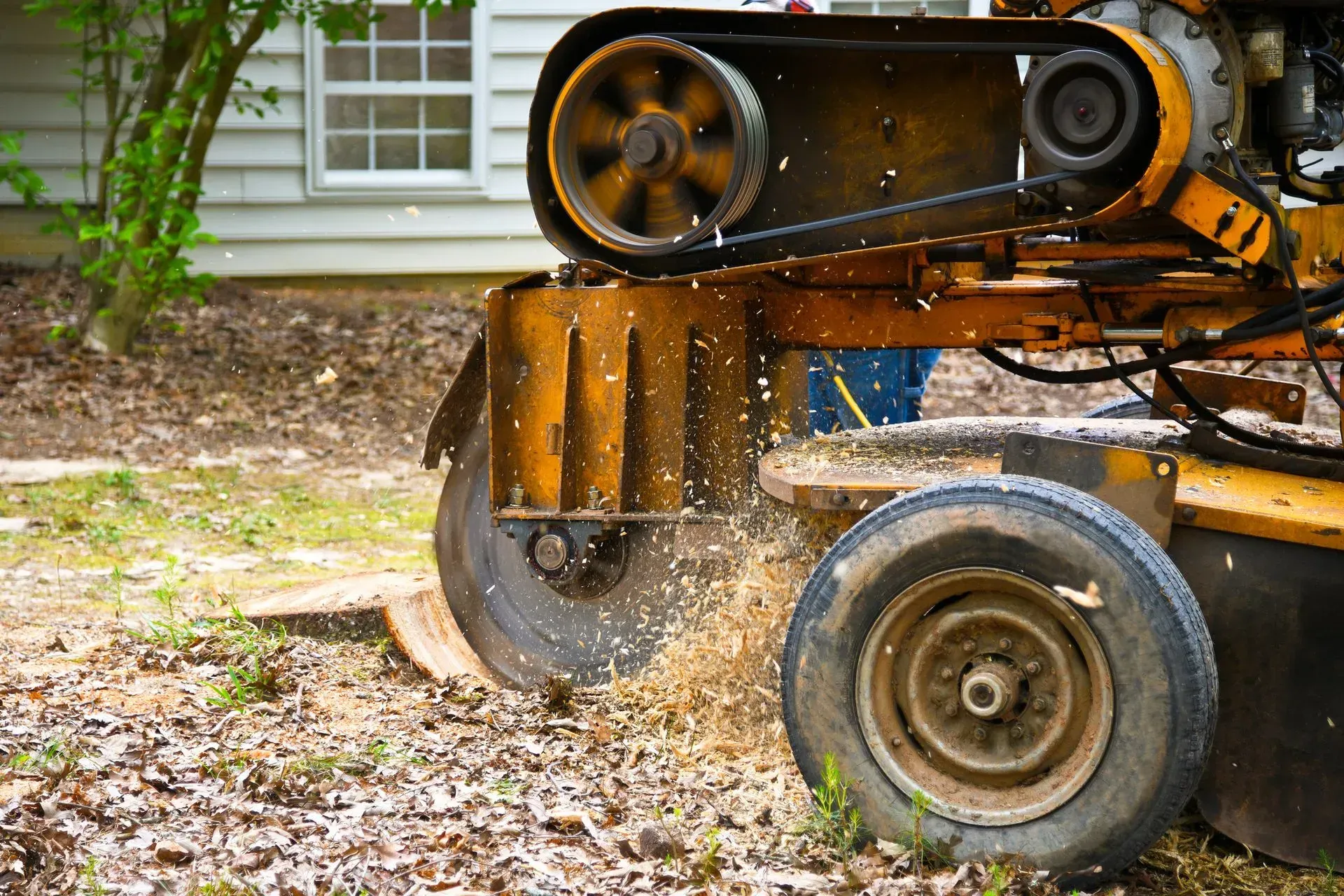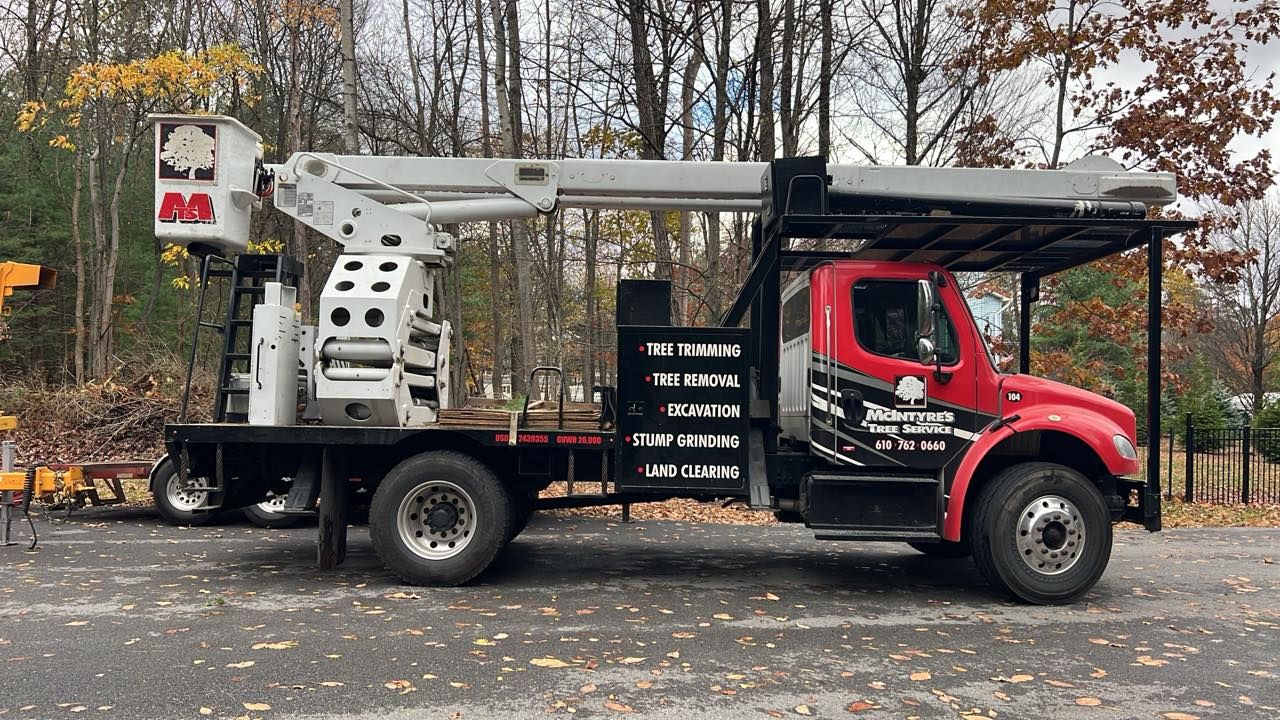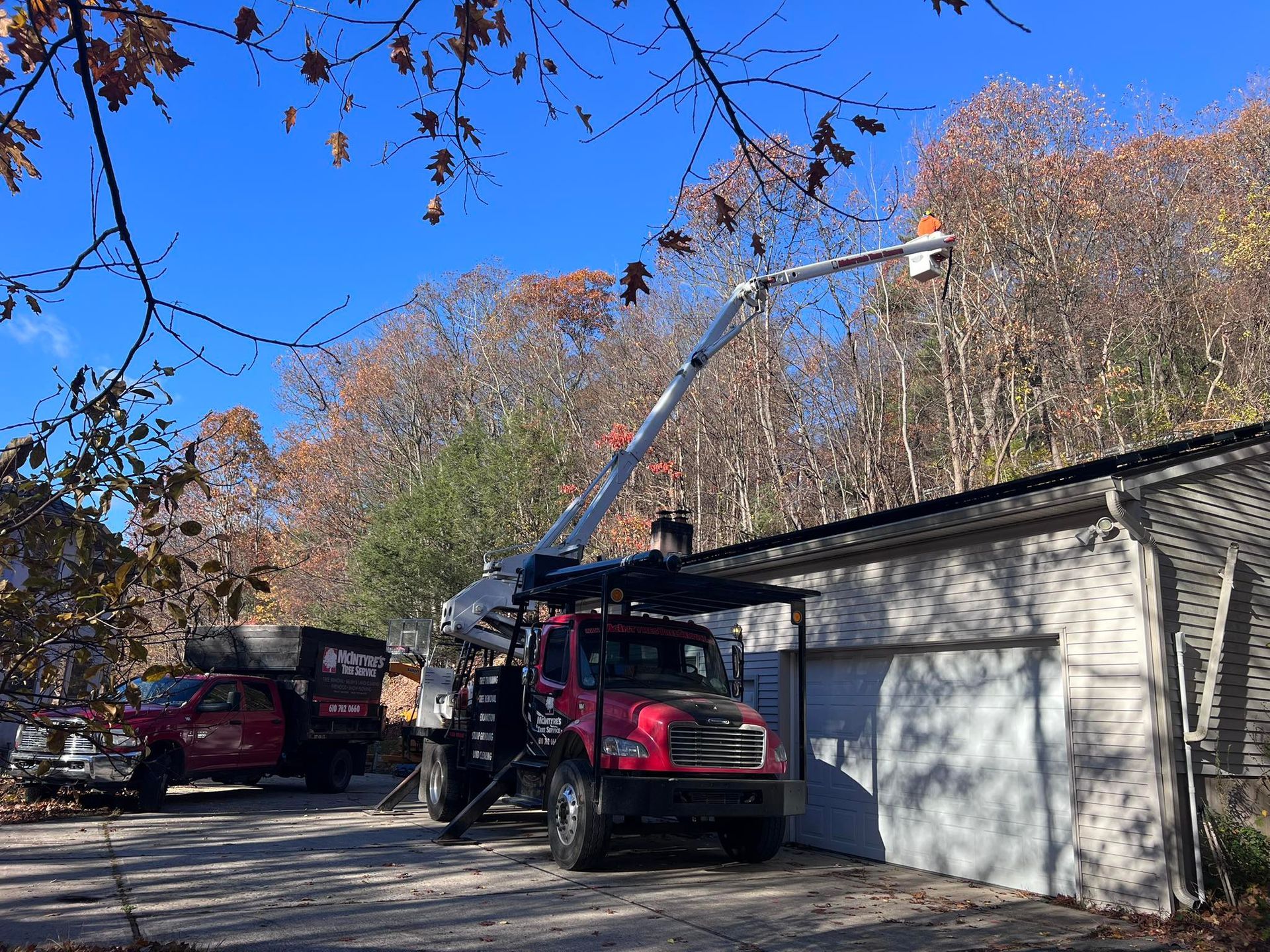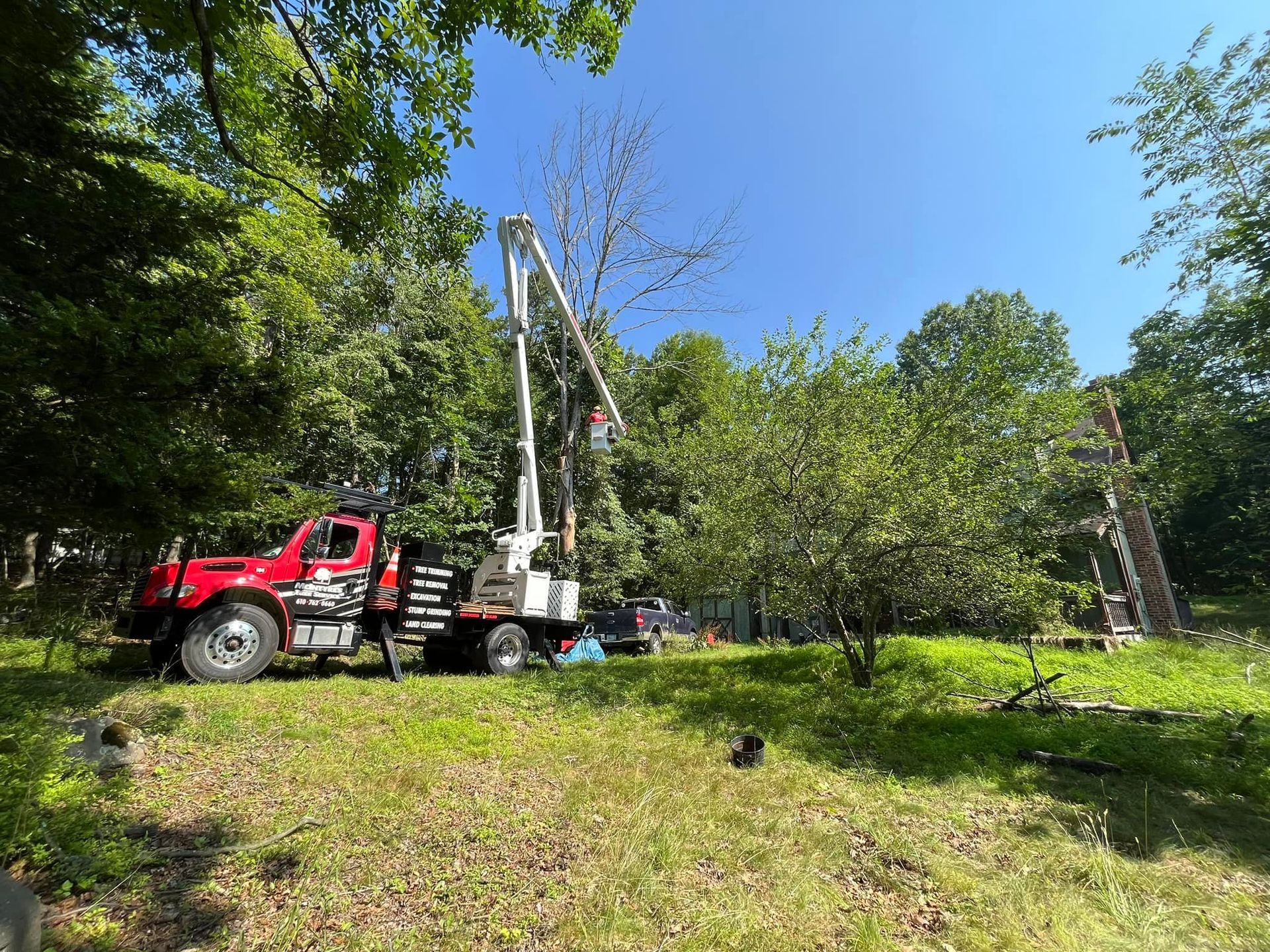How Stump Grinding Can Prevent Pest Infestation

Tree removal may feel like the end of a project, but leaving behind the stump can bring more problems than many realize. Old tree stumps may seem harmless, but they create the perfect environment for pests to thrive. Insects like termites, ants, beetles, and even rodents can take up residence—and eventually make their way into your home or garden.
We believe that taking the extra step to
eliminate tree stumps with professional
stump grinding is essential to maintaining a healthy, pest-free yard. Let’s break down how this simple service can be a powerful weapon in pest prevention.
Why Pests Are Attracted to Tree Stumps
Here’s why stumps become magnets for pests:
- Moisture: Rotting wood retains moisture, which many insects love.
- Shelter: Stumps provide cover from predators and harsh weather.
- Food: The decaying organic matter is a rich food source.
These factors make old stumps ideal breeding grounds for insects—and once these pests have settled in, it’s just a matter of time before they migrate to nearby trees, garden beds, or even the structure of your home.
The Connection Between Stump Grinding and Pest Control
The most effective way to stop this pest cycle is to remove the habitat entirely. That’s where stump grinding comes in. By grinding the stump below ground level, we eliminate the soft, rotting wood that pests depend on. Without shelter or food, insects are far less likely to infest your property.
Here’s what makes stump grinding pests a smart strategy:
- Destroys existing nests inside the stump.
- Removes breeding grounds before pests multiply.
- Helps prevent future infestations from spreading to nearby areas.
- Makes your lawn cleaner, safer, and easier to maintain.
This is one of those preventive measures that pays off both in the short term and over time. The sooner we remove the stump, the less likely it is to attract harmful bugs.
Common Pests That Thrive in Tree Stumps
To fully understand the importance of stump grinding, it helps to know what we’re up against. Some of the most common pests we find living in old stumps include:
Termites
These wood-devouring insects can chew through a stump in no time. Once a colony is established, termites can easily spread to your fence, deck, or even the foundation of your home.
Carpenter Ants
Unlike termites, carpenter ants don’t eat wood—they hollow it out for nesting. But the damage can be just as serious, especially if they reach your home’s structure.
Wood-Boring Beetles
Beetles lay their eggs in the wood. As the larvae hatch and grow, they tunnel through the stump, weakening it and making the area unsafe.
Rodents and Snakes
Once the wood starts decaying, it can attract larger pests too. Rodents often dig into soft stumps for shelter, and snakes follow close behind, drawn by the easy meal.
Removing the stump cuts off the habitat for all these creatures.
Health Risks Associated with Untreated Tree Stumps
It’s not just your landscape at risk—your health might be, too. Some pests carry bacteria and disease, and decaying wood can create mold or fungi that irritate allergies or asthma. Rodent droppings can pose additional concerns, especially in areas where children or pets play.
By choosing to eliminate tree stumps through grinding, we reduce those risks and improve the safety of the entire outdoor environment.
How Stump Grinding Works
The process of stump grinding is straightforward but highly effective. Using powerful machinery, we grind the stump into wood chips, reducing it several inches below the soil line. What remains is a smooth, level surface that can be covered with soil or replanted with grass.
Here’s a quick breakdown of what happens during a professional stump grinding service:
- We assess the stump’s size, location, and any underground utilities.
- The grinding machine is positioned and started over the stump.
- The rotating blade chips away at the wood until the stump is completely ground down.
- We clean up the area, removing debris or leaving mulch if you prefer.
It’s fast, clean, and environmentally responsible. Most importantly, it’s the best way to stop the spread of pests before it starts.
Benefits of Stump Grinding for Your Property
While pest control is a major reason to invest in stump grinding, the benefits don’t stop there. By removing old stumps, we also help improve your yard in other meaningful ways:
- Prevents tripping hazards, especially for kids or guests.
- Increases curb appeal by giving your lawn a cleaner look.
- Frees up space for new landscaping or planting.
- Makes mowing easier without obstacles in the way.
All of these advantages make your yard safer, healthier, and easier to enjoy year-round.
Why DIY Stump Removal Isn't Enough
Many homeowners consider removing a stump on their own, but this approach comes with several challenges. Hand tools or even chainsaws don’t get the job done completely—and they often leave parts of the stump behind that pests can still use. Chemical methods take weeks to work and pose potential hazards to the environment or your pets.
We recommend hiring professionals with the right equipment and experience. At Mcintyre’s Tree Service, we provide safe, thorough stump grinding that eliminates the risk of pests and leaves your yard looking fresh and clean.
How Often Should You Eliminate Tree Stumps?
Ideally, stumps should be removed right after tree removal. The longer a stump sits, the more likely it is to rot and become a nesting site. If you have older stumps on your property, the best time to act is now—especially before warmer months when pest activity increases.
Here’s a quick checklist to help you decide:
- Was the stump left behind after a storm or emergency removal?
- Have you seen ants, termites, or beetles near the stump?
- Is the stump soft, crumbly, or covered in fungi?
- Do you notice rodent burrows around the area?
If you answered yes to any of these, it’s time to consider stump grinding pests before the problem grows.
Partnering with the Right Tree Service Matters
Choosing the right team makes all the difference. When you work with Mcintyre’s Tree Service, you’re partnering with licensed professionals who care about your property as much as you do. We bring years of experience, industry-grade equipment, and a commitment to safe, effective stump grinding services.
We make the process easy from start to finish, whether you need one stump removed or several. Our goal is always to protect your home and yard from long-term pest problems—and leave your space cleaner than we found it
Why Stump Grinding Is Essential for Pest Control
Stump grinding isn’t just about aesthetics—it’s a critical step in protecting your property from unwanted pests. Old stumps attract insects and rodents that can cause damage to your home, health, and landscape. By choosing to eliminate tree stumps quickly and professionally, we prevent these infestations before they start.
With a single service, we help safeguard your yard, improve its appearance, and give you peace of mind knowing your home is better protected.
Contact Mcintyre’s Tree Service for Professional Stump Grinding
If you’re ready to take control of your yard and prevent pests from taking hold, we’re here to help. At Mcintyre’s Tree Service, we specialize in thorough, affordable stump grinding that protects your home and lawn. Call us at 610-762-0660 or email us at mcintyrestreeservice@gmail.com to learn more.
Let’s make your property safer, cleaner, and pest-free—starting with that stubborn old stump.
Frequently Asked Questions
1. What is the benefit of stump grinding after tree removal?
Stump grinding is one of the most effective ways to clean up your yard after a tree has been cut down. It removes the remaining stump below ground level, preventing decay and pest infestation. Without this step, the leftover wood can attract unwanted insects and become a safety hazard in your landscape
2. How does stump grinding help with pest control?
Old stumps attract termites, ants, beetles, and even rodents. By choosing stump grinding, you destroy the rotting wood these pests thrive on. This proactive step prevents pests from settling in and spreading to nearby areas like your garden, fences, or home
3. Why is it important to eliminate tree stumps completely?
When we eliminate tree stumps, we reduce the risk of pest problems, improve the appearance of your yard, and create a safer environment for kids and pets. Leaving a stump behind can lead to fungal growth, insect nesting, and root sprouting, all of which can become long-term issues.
4. What types of pests are commonly found in untreated stumps?
Stump grinding pests include termites, carpenter ants, wood-boring beetles, and sometimes rodents. These pests feed on or shelter in the decaying wood, and over time, they may spread into nearby plants or structures. Prompt removal through grinding helps stop this cycle.
5. Can I use DIY methods instead of professional stump grinding?
While DIY options exist, they often leave parts of the stump behind, which can still attract pests. Professional stump grinding ensures complete removal using specialized equipment, saving you time and preventing potential damage from lingering infestations.



